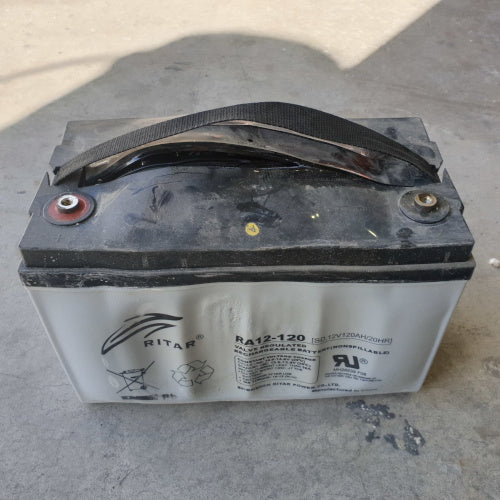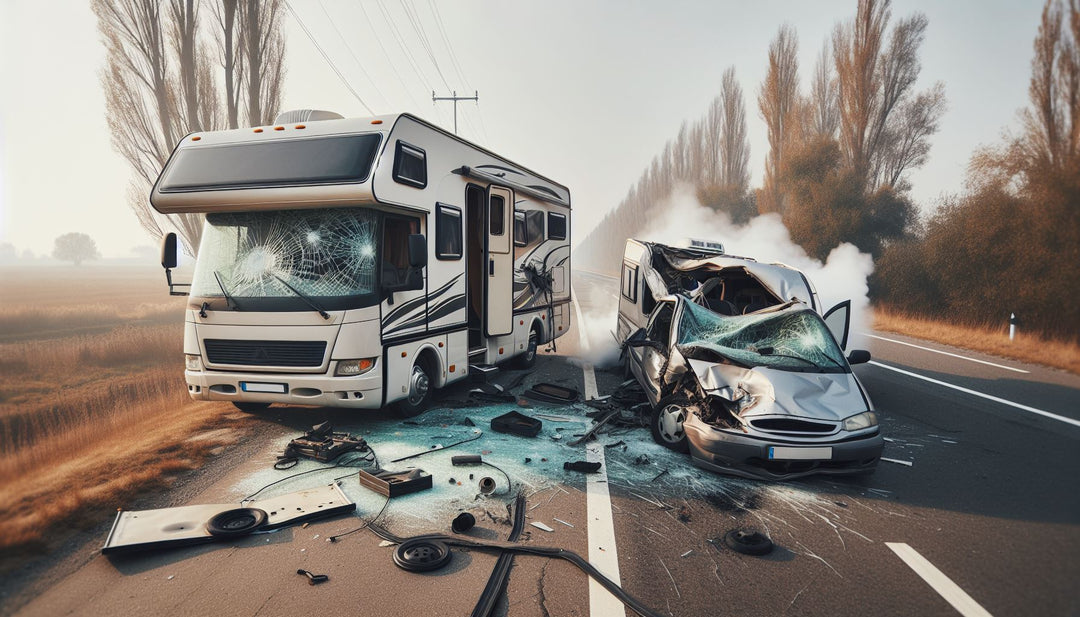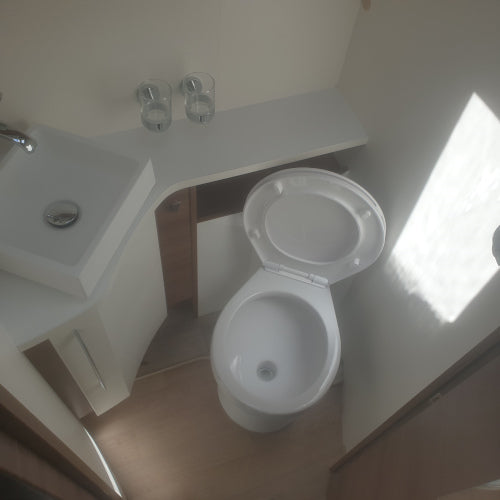Basic AGM battery management information

A battery is a storage vessel for energy, so whatever you take out, you must put it back, preferably as quickly as possible. The worst thing you can do to a battery is extract the energy and then leave it flat for an extended period. That could wreck the battery entirely in just a couple of weeks.
Many motor home owners complain because their batteries are playing up. Usually, they do not have a solar system or a proper charge system that tops up the batteries correctly. Mostly, they have no or poor-quality battery monitoring systems and no idea what damage they do to their house batteries.
How do I know the condition of my RV or motor-home house batteries?
It is, however, possible to tell the state of charge of the batteries by the voltage on a digital display alone:
For example, with a 12-volt system, 11.9 volts is a dead flat battery, and 12.7 volts is a fully charged battery at rest. The difference is only 0.8 volts. That is why a digital display is required. You must also be aware that such a slight voltage difference can be lost in resistance through the motor home wiring. If the voltage measures 12.7 at the battery, it could easily measure less than 12 volts when the energy is consumed, especially if the cables are undersized. So the question is: What is your correct battery voltage? Where have you measured it? What else is going on in the system? Are your cables able to carry the load? What is the condition of your cables and connections?
How do I know the batteries are charging correctly?
Assuming all is well with your system, you can rely on the following measures: If you read a battery voltage at 13.7 with a quality digital meter, it means that the battery is being charged through solar, alternator, or a 240-volt charger. Disconnect all charge systems, and the voltage should go down to 12.7 when at rest (nothing going in or out). A battery voltage lower than 12.7 means the battery is not charged fully or is damaged.
A voltage of 14.9 during the daytime is usually just the solar system in its final stage of the charge. This happens for about 90 minutes per day. If the voltage of 14.9 persists for more than 90 minutes, the system is faulty, and your batteries may get damaged by overcharging.
So, if you suspect something is wrong with your batteries, disconnect the solar panel or put a sheet of cardboard over the panel before checking the batteries. We have seen many "so-called experts" test the house batteries with the solar system still connected. The solar system will skew the results of the test, and this gives good readings on a bad battery.
What sort of solar system would I need for my RV, motor home, or caravan?
A customer once told me that he had the perfect solar system and that he never ran out of power; naturally, I was very interested because I had not found the perfect system yet. I asked him exactly what his system was made up of and how he was using it.
The first thing he said was, I have an 80-watt solar panel, and that is more than plenty. I can go weeks without plugging in. Well, how is that possible? A small panel like that can only produce about 5 or 6 amps at 12 volts in perfect conditions for a maximum of 6 hours daily. He was watching TV, running lights, and a pump and may have used more energy than the panel could produce; I questioned him more.
He had the following in his motorhome:
- 80-watt solar panel and controller
- 240 AC volt charger
- Engine alternator, size unknown
- 800 amp/hrs of battery capacity
The ideal system is balanced with sufficient solar power to produce enough energy, even in poor weather conditions.
A good comparison is to imagine that your batteries are like the rainwater tanks at home and that the roof is like the solar system. If you have a large roof and small tanks, you cannot benefit from the large surface area of the roof because you do not have enough storage capacity in your tanks, but the tank will fill up fast when it does rain. However, the tank will not serve you well during long periods of dry weather.
If you have large tanks with a small roof, then the tank will take forever to fill up and might never become full.
Solar Systems and Solar Fridges
The solar system should have enough capacity to be able to recharge the batteries and run the fridge all day long, even in poor weather conditions. At night, the fridge runs on the battery, which is then recharged the following day. If it is not possible to have large solar panels, alternative charge systems should be in place, or the battery capacity should be increased. Batteries need to be charged properly at all times. Maintaining the battery state of charge above 80% is good practice. Poorly managed batteries may only last 12 months, whereas well-maintained batteries can last 5 years or longer.
The less your deep cycle battery is discharged before recharging again, the longer it will last.
The cycling ability of an AGM battery:
Below is an example of the typical life cycle of a battery based on the amount it is discharged daily.
- 10% discharge before recharging daily = 3800 cycles = approx 10 years
- 25% discharge before recharging daily = 1500 cycles = approx 4 years
- 50% discharge before recharging daily = 650 cycles = less than 2 years
- 100% discharge before recharging daily = 300 cycles = less than 1 year
It is good to always good to avoid discharging your batteries no more than 20%
If by now you have decided that it is time to replace your batteries and you need to decide what batteries are best, you might consider buying Lithium batteries instead of AGM batteries. Lithium batteries can be discharged almost completely, unlike AGM batteries; they also last much longer and are designed to be cycled much harder than AGM batteries
We hope this has been helpful to you


